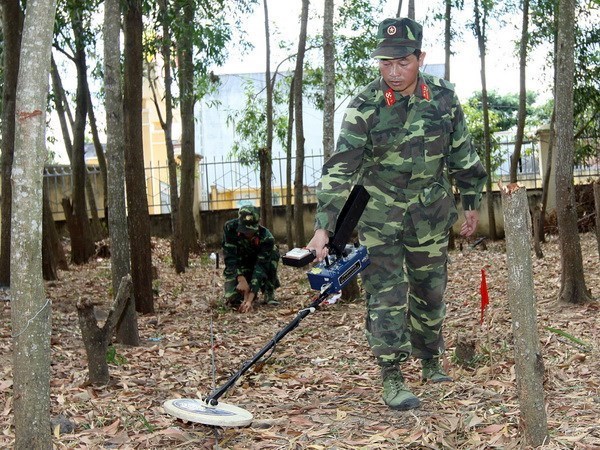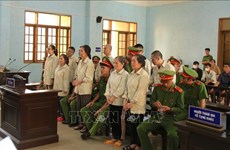Quang Binh works hard on bomb and mine clearance
 Illustrative image (Photo: VNA)
Illustrative image (Photo: VNA)Quang Binh (VNA) - A workshop on building a database for coordination in overcoming post-war bombs, mines and unexploded ordnance (UXO) in the central province of Quang Binh was organised in the locality on May 30.
As part of a project on establishing and assisting database units, and
coordinating the settlement of UXO consequences in Quang Binh, the event was held
by the provincial
Department of Foreign Affairs in coordination with the Norwegian People’s Aid (NPA) of Norway.
The non-refundable aid project is funded by NPA, which
is a non-governmental organisation operating in mine action, disarmament,
development, and humanitarian assistance.
It aims to assist Quang Binh in establishing,
developing, and operating a database
management system and a coordination system for provincial-level bomb
and mine cleanup activities, thus helping to consolidate collection activities,
safe handling and storage.
The project also focus on analysing data serving the decision-making process related to post-war bomb and mine handling activities
at the national and provincial levels.
The objectives in the project’s first phase were introduced at the workshop. Participants also
discussed and briefed on the results of the project, while proposing solutions to continue
implementing the project effectively.
The provincial authorities have actively implemented the post-war bomb and mine
clearance work, especially in cleaning bombs and mines; educating
on prevention of accidents caused by bombs and mines; and supporting bomb and
mine victims with funding sourced from targeted support projects of the Government, and programmes
and projects implemented by the local authorities and NGOs.
According to statistics released in 2009 by
the Defence Ministry’s Technology Centre for Bomb and Mine Disposal and the
Vietnam Veterans of America Foundation, nearly 225,000ha of land across all
communes, wards and townships in Quang Binh was contaminated with UXO,
accounting for 27.9 percent of the province’s area.
In particular, UXO polluted 96.9 percent of residential land, 95 percent of
agricultural land, and 84.3 percent of land under perennial trees./.













